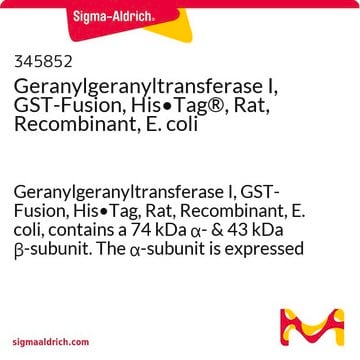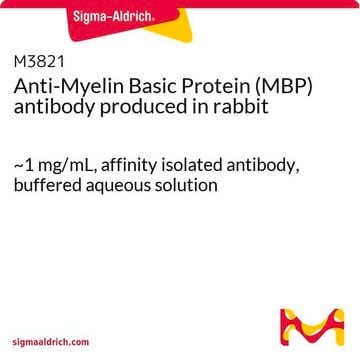05-1312-I
Anti-Ubiquityl-Histone H2B Antibody, clone 56
clone 56, from mouse
Sinonimo/i:
Histone H2B type 1-C/E/F/G/I, Histone H2B.1 A, Histone H2B.a, H2B/al, Histone H2B.g, H2B/g, Histone H2B.h, H2B/h, Histone H2B.k, H2B/k, Histone H2B.l, H2B/l)
About This Item
Prodotti consigliati
Origine biologica
mouse
Livello qualitativo
Forma dell’anticorpo
purified antibody
Tipo di anticorpo
primary antibodies
Clone
56, monoclonal
Reattività contro le specie
mouse, human, rat
Confezionamento
antibody small pack of 25 μg
tecniche
ChIP: suitable
western blot: suitable
Isotipo
IgG2aκ
N° accesso NCBI
N° accesso UniProt
Condizioni di spedizione
ambient
modifica post-traduzionali bersaglio
unmodified
Informazioni sul gene
human ... HIST1H2BC(8347)
Descrizione generale
Specificità
Immunogeno
Applicazioni
Epigenetics & Nuclear Function
Western Blotting Analysis: A representative lot detected Ubiquityl-Histone H2B in U2OS whole cell extract, purified histone H2A, purified H2B, and HEK293 acid extracted proteins (Courtesy of Dr. Moshe Oren, Weizmann Institute of Science).
Chromatin Immunoprecipitation (ChIP) Analysis: A representative lot detected Ubiquityl-Histone H2B in uH2B and H3K4me2 (Courtesy of Dr. Moshe Oren, Weizmann Institute of Science).
Qualità
Western Blotting Analysis: 0.25 µg/mL of this antibody detected Ubiquityl-Histone H2B in 10 µg of PC-12 cell lysate.
Descrizione del bersaglio
Stato fisico
Stoccaggio e stabilità
Altre note
Esclusione di responsabilità
Not finding the right product?
Try our Motore di ricerca dei prodotti.
Codice della classe di stoccaggio
12 - Non Combustible Liquids
Classe di pericolosità dell'acqua (WGK)
WGK 1
Punto d’infiammabilità (°F)
Not applicable
Punto d’infiammabilità (°C)
Not applicable
Certificati d'analisi (COA)
Cerca il Certificati d'analisi (COA) digitando il numero di lotto/batch corrispondente. I numeri di lotto o di batch sono stampati sull'etichetta dei prodotti dopo la parola ‘Lotto’ o ‘Batch’.
Possiedi già questo prodotto?
I documenti relativi ai prodotti acquistati recentemente sono disponibili nell’Archivio dei documenti.
Il team dei nostri ricercatori vanta grande esperienza in tutte le aree della ricerca quali Life Science, scienza dei materiali, sintesi chimica, cromatografia, discipline analitiche, ecc..
Contatta l'Assistenza Tecnica.







